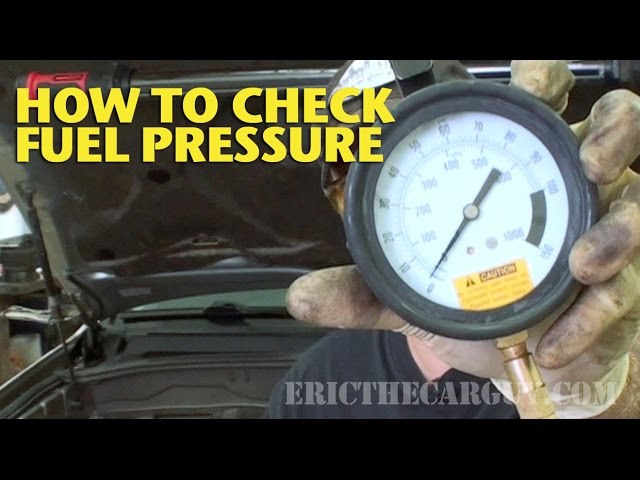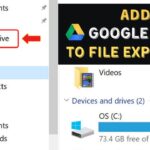How to Check Fuel Pressure: A Comprehensive Guide
Checking fuel pressure is a crucial diagnostic step when troubleshooting issues related to a vehicle’s fuel system. This process helps identify problems such as low fuel pressure, which can cause symptoms like difficulty starting the engine, engine misfires, and poor performance. Here’s a detailed guide on how to check fuel pressure, including the necessary tools, steps, and potential issues to look out for.
Tools and Equipment Needed
To check fuel pressure, you will need the following tools and equipment:
- Fuel Pressure Gauge: This is the primary tool for measuring fuel pressure. It can be rented from an auto parts store or purchased if you plan to perform this test frequently.
- Adapters: Depending on the vehicle, you may need specific adapters to connect the fuel pressure gauge to the fuel system.
- Safety Gear: Always wear safety glasses and gloves when working with fuel systems to protect yourself from potential fuel leaks and other hazards.
- Measuring Container (Optional): For a fuel volume test, you may need a glass measuring container to collect fuel samples.
Steps to Check Fuel Pressure
Step 1: Safety First
Before starting the test, ensure you are in a well-ventilated area and avoid any sources of ignition. Wear safety glasses and gloves to protect yourself from fuel spills.
Step 2: Locate the Fuel Pressure Test Port
Identify the fuel pressure test port on your vehicle. This port is usually located on the fuel rail and is designed for attaching a fuel pressure gauge. Consult your vehicle’s service manual or look for a schematic to determine the exact location.
Step 3: Attach the Fuel Pressure Gauge
- Remove the Safety Clip: If there is a safety clip or cap covering the test port, remove it to access the port.
- Install the Gauge: Attach the fuel pressure gauge to the test port, ensuring it is securely connected. You may hear an audible click when it is seated properly.
Step 4: Bleed the Fuel System
To ensure accurate readings, you need to bleed the fuel system to remove any air or pressure that might be trapped:
- Remove the Fuel Pump Relay: Locate the fuel pump relay in the fuse box and remove it. This will prevent the fuel pump from running while you bleed the system.
- Crank the Engine: With the relay removed, crank the engine to drain the pressure from the system. You will hear the engine attempt to start with low pressure.
Step 5: Take Pressure Readings
- Start the Engine: Once the system is bled, replace the fuel pump relay and start the engine. Let it idle while you take the pressure readings.
- Note the Pressure: Observe the fuel pressure gauge and note the reading. Compare this to the manufacturer’s specified pressure range for your vehicle.
Step 6: Perform Additional Tests
- Leak Down Test: Monitor the fuel pressure gauge for a few minutes to ensure the pressure remains stable. If the pressure drops quickly, it could indicate a leak in the system.
- Fuel Volume Test: If you suspect a problem with fuel delivery, perform a fuel volume test. Collect fuel samples over a set period (e.g., 5 seconds) and measure the volume to ensure it meets the manufacturer’s specifications.
Potential Issues and Troubleshooting
Low Fuel Pressure
- Symptoms: Difficulty starting the engine, engine misfires, poor acceleration, stalling at low speeds, and unusual noises from the fuel tank.
- Causes: Faulty fuel pump, clogged fuel filter, malfunctioning fuel pressure regulator, or leaks in the fuel system.
High Fuel Pressure
- Symptoms: Engine surging, poor performance, and potential damage to fuel system components.
- Causes: Malfunctioning fuel pressure regulator or blockages in the return line.
FAQ
Q: What tools do I need to check fuel pressure?
A: You need a fuel pressure gauge, adapters for your vehicle’s fuel system, safety gear (gloves and safety glasses), and optionally a measuring container for a fuel volume test.
Q: How do I locate the fuel pressure test port on my vehicle?
A: Consult your vehicle’s service manual or look for a schematic to determine the exact location of the fuel pressure test port.
Q: What safety precautions should I take when checking fuel pressure?
A: Work in a well-ventilated area, avoid sources of ignition, and wear safety glasses and gloves to protect yourself from fuel spills.
Q: How do I bleed the fuel system before taking pressure readings?
A: Remove the fuel pump relay, crank the engine to drain the pressure, and then replace the relay before starting the engine to take readings.
Q: What does a low fuel pressure reading indicate?
A: Low fuel pressure can indicate a faulty fuel pump, clogged fuel filter, malfunctioning fuel pressure regulator, or leaks in the fuel system.
Q: How do I perform a leak down test for fuel pressure?
A: Monitor the fuel pressure gauge for a few minutes to ensure the pressure remains stable. If the pressure drops quickly, it could indicate a leak in the system.
Table: Steps to Check Fuel Pressure
| Step | Description | Example |
|---|---|---|
| Safety First | Ensure you are in a well-ventilated area and wear safety gear | Wear safety glasses and gloves, avoid sources of ignition |
| Locate Test Port | Identify the fuel pressure test port on your vehicle | Consult service manual or look for a schematic |
| Attach Gauge | Remove safety clip and attach fuel pressure gauge | Securely connect gauge to test port |
| Bleed Fuel System | Remove fuel pump relay, crank engine to drain pressure | Replace relay after bleeding |
| Take Pressure Readings | Start engine and note pressure reading | Compare reading to manufacturer’s specifications |
| Additional Tests | Perform leak down test and fuel volume test if necessary | Monitor pressure stability and measure fuel volume |
Additional Resources
For more detailed information on fuel systems and diagnostic techniques, you can refer to the following Wikipedia article:
- Fuel System: Fuel System – Wikipedia
This guide has provided a comprehensive overview of how to check fuel pressure, including the necessary tools, steps, and potential issues to look out for. By following these steps, you can diagnose and troubleshoot problems in your vehicle’s fuel system effectively.
Conclusion
Checking fuel pressure is an essential diagnostic step for identifying issues within a vehicle’s fuel system. By understanding the steps outlined in this guide, you can accurately measure fuel pressure and perform additional tests to ensure your vehicle’s fuel system is functioning correctly. Always prioritize safety and consult your vehicle’s service manual for specific instructions tailored to your vehicle model.



